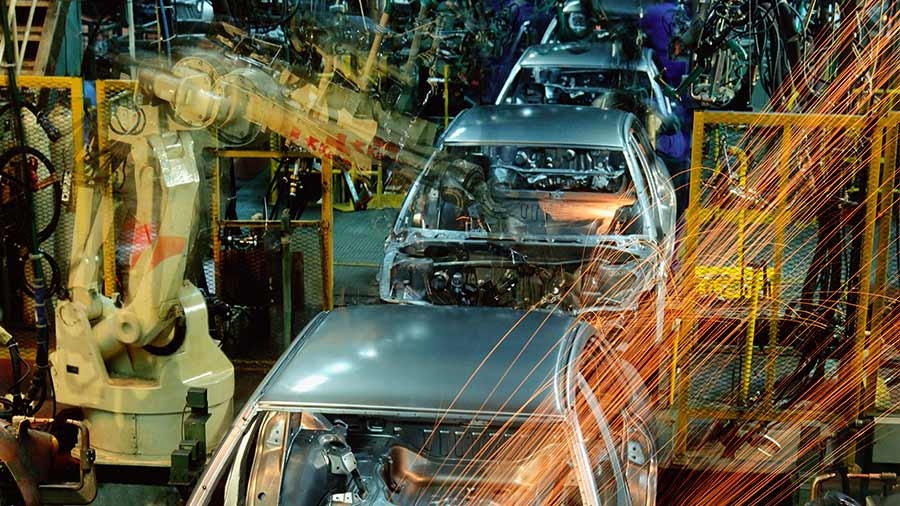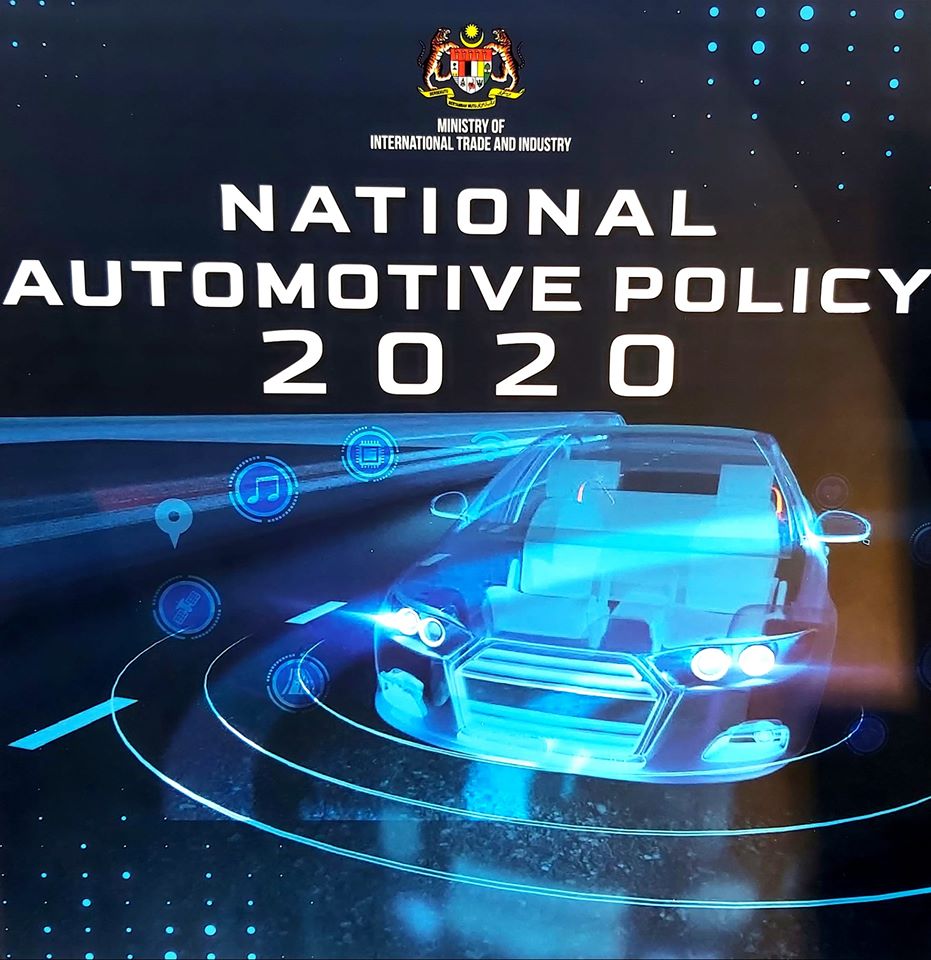The National Automotive Policy aims to boost the automotive sector’s growth and sustainability. It focuses on innovation, green technology, and competitive global positioning.
The National Automotive Policy is a strategic framework designed to enhance the automotive industry’s development. It promotes innovation, sustainability, and competitiveness, aligning with global standards. The policy encourages investment in research and development, prioritizing green and smart technologies. It aims to create a robust automotive ecosystem that supports local manufacturers and suppliers.
By fostering a conducive environment for growth, the policy seeks to generate employment opportunities and drive economic progress. It also focuses on reducing carbon emissions and promoting electric vehicles. This comprehensive approach ensures the industry remains resilient and competitive in the global market.
Introduction To National Automotive Policy
The National Automotive Policy is a strategic framework. It aims to shape the future of the automotive industry. This policy supports innovation, sustainability, and economic growth. It sets guidelines for manufacturers, suppliers, and consumers.
The Role In Future Mobility
The policy focuses on the future of mobility. It promotes electric vehicles (EVs) and autonomous driving technology. This shift to EVs helps reduce carbon emissions. The policy also encourages the development of smart transportation systems.
- Encourages electric vehicle adoption
- Supports autonomous driving technology
- Promotes smart transportation systems
Impact On Economic Growth
The policy has a significant impact on economic growth. It creates new jobs in the automotive sector. It also boosts investments in research and development. Small and medium enterprises (SMEs) benefit from these investments.
| Impact | Details |
|---|---|
| Job Creation | New opportunities in manufacturing and tech |
| Investment Boost | Increased R&D funding |
| Support for SMEs | Financial aid and resources |

Credit: www.aseanbriefing.com
Historical Context Of Automotive Policies
The National Automotive Policy has roots in early transport regulations. It has evolved with changing technologies and societal needs. Understanding this history helps in appreciating current policies and future directions.
Evolution From Horse Carriages To Autonomous Vehicles
The journey began with horse-drawn carriages in the 18th century. Early regulations focused on safety and road use. The invention of the internal combustion engine in the late 19th century revolutionized transport. Policies adapted to new challenges like emissions and road safety.
The 20th century saw the rise of mass-produced cars. This demanded more structured policies. Governments introduced safety standards and emissions controls. Now, we are in the era of autonomous vehicles. Policies are evolving to address these new technologies.
Previous Policies And Their Outcomes
Early automotive policies aimed at regulating speed and ensuring road safety. The Motor Car Act of 1903 in the UK introduced the first driver’s license. This set a precedent for global automotive regulation.
In the 1960s, emission regulations began to take shape. The Clean Air Act of 1963 in the US was a landmark policy. It aimed to reduce air pollution from vehicles. This led to the development of cleaner engines and fuels.
The 1990s saw a focus on fuel efficiency and environmental impact. Policies encouraged the development of hybrid and electric vehicles. These policies significantly reduced carbon emissions.
Today, policies are addressing autonomous driving and connected cars. Governments are setting standards for safety and data privacy. These policies aim to make roads safer and transport more efficient.
| Era | Focus of Policies |
|---|---|
| 18th Century | Safety, Road Use |
| Late 19th Century | Emissions, Road Safety |
| 20th Century | Mass Production, Safety Standards, Emissions Controls |
| 21st Century | Autonomous Vehicles, Data Privacy, Safety |
Global Trends Influencing Policy Direction
The National Automotive Policy evolves with global trends. These trends shape the future of the automotive industry. Two key trends are electrification of vehicles and autonomy and connectivity.
Electrification Of Vehicles
Electric vehicles (EVs) are changing the automotive landscape. Governments push for zero-emission vehicles. This reduces pollution and reliance on fossil fuels.
Policies support EVs through incentives and infrastructure development. Charging stations are now more common. This makes owning an EV easier.
Manufacturers invest in battery technology. This extends the range and reduces costs. Consumers gain confidence as EV technology improves.
| Benefits | Challenges |
|---|---|
| Reduced emissions | High initial cost |
| Lower operating costs | Charging infrastructure |
| Energy independence | Battery disposal |
Autonomy And Connectivity
Autonomous vehicles (AVs) and connected cars are the future. Self-driving technology aims to reduce accidents. It also improves traffic flow.
Connectivity links cars to the internet. It enhances safety and convenience. Smart cities use this technology for better traffic management.
Policies focus on data privacy and cybersecurity. Ensuring safe integration of AVs is crucial. Standards and regulations are continuously evolving.
- Improved safety
- Reduced traffic congestion
- Enhanced user experience
Challenges include public acceptance and technical hurdles. Developing these technologies requires substantial investment. Governments and industries must collaborate closely.
Credit: www.miti.gov.my
Environmental Considerations
The National Automotive Policy focuses on reducing environmental impact. This includes improving emission standards and encouraging sustainable practices. Protecting the environment is a key goal for the automotive industry.
Emission Standards And Controls
Emission standards are crucial for cleaner air. The policy sets strict limits on pollutants. This includes carbon monoxide, nitrogen oxides, and particulate matter.
Advanced technologies help in meeting these standards. Examples include:
- Electric Vehicles (EVs): Zero tailpipe emissions.
- Hybrid Vehicles: Reduced fuel consumption and emissions.
- Advanced Catalytic Converters: Lower harmful emissions.
Regular inspections ensure vehicles meet these standards. Non-compliance leads to penalties. This encourages manufacturers to adhere to the rules.
Sustainable Manufacturing Processes
Sustainable manufacturing reduces the environmental footprint. This involves using eco-friendly materials and minimizing waste.
Key strategies include:
- Recycling: Using recycled materials in vehicle production.
- Energy Efficiency: Utilizing renewable energy sources in factories.
- Water Conservation: Reducing water usage in manufacturing processes.
Manufacturers are adopting green technologies. These include solar panels and wind turbines. They aim to achieve net-zero emissions in their operations.
Below is a table summarizing sustainable manufacturing practices:
| Practice | Benefit |
|---|---|
| Recycling | Reduces raw material usage |
| Energy Efficiency | Lowers carbon footprint |
| Water Conservation | Preserves water resources |
The National Automotive Policy supports these initiatives. It aims to create a cleaner and greener future.
Economic Incentives And Subsidies
The National Automotive Policy includes many economic incentives and subsidies. These help both manufacturers and consumers. This section explores the key incentives and subsidies.
Tax Breaks And Grants For Manufacturers
Manufacturers receive various tax breaks and grants to promote vehicle production. These incentives lower production costs and boost the automotive sector.
| Type | Description |
|---|---|
| Tax Breaks | Reduces corporate tax rates |
| Grants | Funds for research and development |
Consumer Incentives For Green Vehicles
Consumers can get incentives to buy green vehicles. These incentives make eco-friendly cars more affordable.
- Rebates for electric car purchases
- Tax credits for hybrid vehicles
- Reduced registration fees for green cars
These incentives encourage people to choose environmentally friendly options. Green vehicles benefit both consumers and the planet.

Credit: www.piston.my
Infrastructure Development For Modern Vehicles
The National Automotive Policy emphasizes infrastructure development for modern vehicles. Key areas include charging network expansion and smart road systems. These initiatives aim to create a better driving experience.
Charging Network Expansion
A robust charging network is vital for electric vehicles (EVs). New charging stations are being built nationwide. This helps reduce range anxiety for EV drivers.
- More charging stations in urban areas
- Charging points at workplaces and shopping centers
- Fast-charging options along highways
These efforts make it easier for people to own and operate EVs. They also support the shift towards greener transportation.
Smart Road Systems
Smart road systems use advanced technology to improve road safety. They include sensors, cameras, and automated traffic management. These systems communicate with modern vehicles for better navigation.
| Feature | Benefit |
|---|---|
| Sensors | Detect road conditions |
| Cameras | Monitor traffic and incidents |
| Automated Traffic Management | Optimize traffic flow |
Smart roads make driving safer and more efficient. They are essential for the future of autonomous vehicles.
Workforce Transformation And Skill Development
The National Automotive Policy focuses on improving skills. It aims to prepare the workforce for future technologies. This ensures the industry remains competitive and innovative.
Reskilling For Future Technologies
Reskilling is crucial. Technology changes rapidly in the automotive industry. Workers need new skills to operate advanced machinery. They must understand electric and autonomous vehicles.
Reskilling programs provide training on these technologies. They help workers stay relevant. Companies benefit by having a skilled workforce.
Educational Programs And Partnerships
Educational programs are vital. They bridge the gap between current skills and future needs. Schools and colleges offer specialized courses in automotive technology.
Partnerships between industry and educational institutions enhance learning. They provide real-world experience through internships and workshops. This collaboration ensures students gain practical skills.
Below is a table showing key educational initiatives:
| Initiative | Description |
|---|---|
| Automotive Engineering Courses | Programs focused on modern automotive technologies. |
| Internship Programs | Hands-on experience in automotive companies. |
| Technical Workshops | Training sessions on emerging automotive trends. |
International Collaboration And Standards
The National Automotive Policy emphasizes international collaboration and global standards. These initiatives aim to harmonize regulations and foster innovation. By aligning with international practices, the policy ensures safety, quality, and environmental sustainability. This section delves into two critical aspects: Cross-Border Regulatory Harmonization and Global Partnerships in Innovation.
Cross-border Regulatory Harmonization
Cross-border regulatory harmonization ensures consistency in automotive standards. It allows cars to meet the same requirements in different countries. This reduces barriers and simplifies trade.
- Safety standards
- Environmental regulations
- Quality benchmarks
Countries work together to create common regulations. This collaboration helps reduce costs for manufacturers. It also makes it easier for consumers to trust foreign vehicles.
Benefits of Harmonization:
| Aspect | Benefit |
|---|---|
| Safety | Uniform safety protocols |
| Environment | Consistent emission standards |
| Quality | Standardized quality checks |
Global Partnerships In Innovation
Global partnerships drive innovation in the automotive industry. Collaborations with international companies and institutions spur technological advancements.
- Research and development initiatives
- Joint ventures and collaborations
- Technology transfer agreements
These partnerships help share knowledge and resources. They enable the development of cutting-edge technologies. Electric vehicles and autonomous driving are key focus areas.
Examples of Innovation Partnerships:
- Electric vehicle development
- Autonomous driving technology
- Advanced safety features
Through international collaboration, the National Automotive Policy aims to create a robust and innovative automotive sector. This ensures the industry remains competitive on a global scale.
Assessing The Policy’s Impact On Consumer Behavior
The National Automotive Policy has brought significant changes. These changes influence how consumers interact with the automotive market. This section explores the policy’s impact on consumer behavior. We’ll look at shifts in vehicle ownership models and the adoption rates of electric and autonomous vehicles.
Shifts In Vehicle Ownership Models
The policy has encouraged new vehicle ownership models. Consumers are now more open to shared ownership. Car-sharing and ride-hailing services have seen a rise. This shift reduces the need for individual vehicle ownership.
Subscription-based services also became popular. These services offer flexibility and lower costs. Consumers can now switch vehicles easily. This trend is especially appealing to younger consumers.
| Ownership Model | Features |
|---|---|
| Car-Sharing | Short-term use, pay-per-use |
| Ride-Hailing | App-based, no ownership required |
| Subscription | Monthly fee, multiple vehicle options |
Adoption Rates Of Electric And Autonomous Vehicles
The policy has also pushed the adoption of electric vehicles (EVs). Tax incentives and subsidies make EVs more affordable. As a result, more consumers are buying EVs.
Autonomous vehicles are also gaining traction. The policy supports research and development in this area. Consumers are becoming more comfortable with the idea of self-driving cars.
- Electric Vehicles
- Lower running costs
- Environmental benefits
- Government incentives
- Autonomous Vehicles
- Increased safety
- Convenience
- Ongoing research and development
Consumers are increasingly opting for these advanced vehicle types. This shift indicates a positive reception of the policy. It also shows a change in consumer preferences.
Future Projections And Policy Amendments
The National Automotive Policy is evolving. It aims to adapt to the dynamic automotive industry. Future projections and policy amendments ensure the policy stays relevant. This section explores how the policy plans to address technological advancements and legislative updates.
Adapting To Technological Advancements
The automotive industry is rapidly changing. New technologies are emerging every day. The policy must adapt to these changes. Electric vehicles (EVs) are gaining popularity. The policy encourages the use of EVs.
- Incentives for EV manufacturers
- Tax benefits for EV buyers
- Charging infrastructure development
Autonomous vehicles are another focus area. The policy aims to support autonomous vehicle development. It includes provisions for research and development. Safety regulations for autonomous vehicles are also in the policy.
Legislative Updates For Ongoing Relevance
Legislative updates keep the policy relevant. The policy undergoes regular reviews. Amendments are made based on industry needs. These updates ensure the policy stays effective.
| Update | Purpose |
|---|---|
| Emission standards | Reduce pollution |
| Safety norms | Enhance road safety |
| Fuel efficiency | Promote sustainable practices |
The policy also addresses cybersecurity concerns. Modern vehicles are connected. They are vulnerable to cyber-attacks. The policy includes measures to enhance vehicle cybersecurity.
Frequently Asked Questions
Who Regulates The Automotive Industry In The Us?
The National Highway Traffic Safety Administration (NHTSA) and the Environmental Protection Agency (EPA) regulate the automotive industry in the US.
What Is Nap Malaysia?
Nap Malaysia refers to the National Automotive Policy of Malaysia, aimed at promoting growth and sustainability in the automotive industry.
What Is The National Automotive Policy Malaysia 2014?
The National Automotive Policy Malaysia 2014 aims to make Malaysia a regional automotive hub. It focuses on energy-efficient vehicles, enhancing competitiveness, and promoting local industry growth. The policy also encourages green technology adoption and innovation in the automotive sector.
What Does The Automotive Industry Cover?
The automotive industry covers vehicle design, manufacturing, marketing, and sales. It includes cars, trucks, motorcycles, and buses. The industry also involves parts and accessories production, maintenance, and repair services.
Conclusion
The National Automotive Policy aims to drive innovation and sustainability in the automotive sector. It provides clear guidelines for manufacturers. This policy promotes growth, safety, and environmental responsibility. It ensures a competitive market, benefiting both consumers and businesses. The future of the automotive industry looks promising with these strategic measures.

